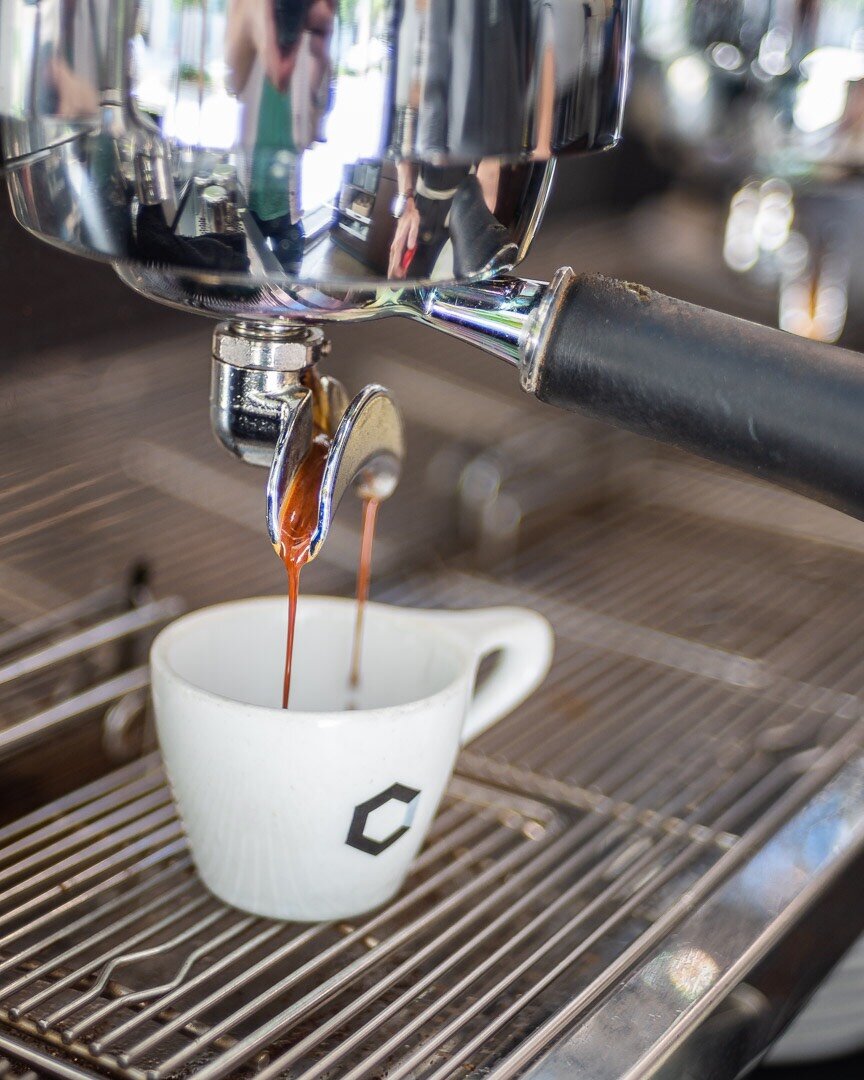In Defense of Decaf
“Death before Decaf” is the motto of many baristas and coffee enthusiasts. “Why would anyone want coffee without caffeine?” For many, the thought of starting the day without coffee, or more precisely, caffeine, is unfathomable, but the reality is, a number of people don’t consume caffeine or limit their intake for various reasons. For many who decide to consume less caffeine, coffee breaks and coffee-shop meetings can be frustrating. At Clarity, we try to provide a number of low-to-no caffeine options and work diligently to ensure that those items meet the same quality and care standards we have for the rest of our offerings.
How much caffeine does a barista consume?
“So when you’re working, you’re probably drinking espresso all day, right?” From dialing in our coffees to quality control throughout the day, it’s easy to consume a good amount of caffeine. That being said, an unscientific poll of our team says that on average, they drink about 2-3 servings of coffee on a day they’re working and just 1-1.5 servings on off days. Generally, all of our coffee offerings have the same caffeine content, between about 120-140mg per serving.
Of course offerings like our sparkling lemonade or a hot chocolate are going to be caffeine free, but what about a green tea or decaf pourover?
We always have an herbal tea available that will be caffeine free. (Our current herbal offering is Chamomile Mint from Urban Teahouse.) With tea, caffeine content correlates with the level of oxidation. The darker the tea leaves, the more caffeine the leaves will contain!
Decaffeinated vs. Caffeine-Free
While it may vary from one process to another, decaffeinated coffee is not completely free of caffeine. Our current decaf offering from Cooperatives in Western Ethiopia is decaffeinated using the Swiss Water Process which removes 99.9% of caffeine. That leaves you with about as much caffeine as you would get from a small bite size piece of chocolate.
The Swiss Water Process is a proprietary decaffeination method that removes 99.9% of the caffeine from small batches of coffee without the use of chemicals. By soaking the coffee in a green coffee extract infused water, the process allows caffeine to diffuse naturally out of the green coffee and into the extract. After decaffeination, the coffee is then sent on to the roaster before they end up in the cafe! We’ve written about another common decaffeination process, Ethyl Acetate, here!
In Defense of Decaf
If caffeine intake is the primary objective for your morning latte or afternoon cold brew, decaffeinated coffee doesn’t make much sense. However, if you are concerned about the amount of caffeine you consume on a daily basis, but enjoy the taste of a great cup of coffee, decaf is the way to go! There’s so much more to coffee than being able to “make it through the day.” For someone who is used to drinking coffee to improve focus but needs an extra boost later in the afternoon, making your regular drink decaffeinated, the ritual of making and drinking a cup may help you trick your mind into a little more productivity without the loss of sleep later on.
Deciding to limit caffeine intake need not be an end to coffee-shop-hopping. A great decaf like KLLR’s Western Ethiopia Co-ops tastes great in milk, as espresso, or a pourover! If you haven’t tried your favorite drink decaffeinated, stop by and try it today! All of our espresso drinks can be made with decaf and we can do both hot and iced pourovers with decaf as well!



